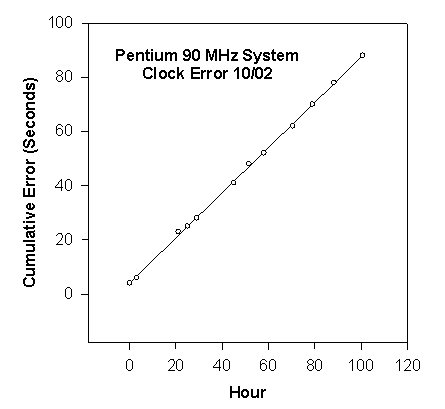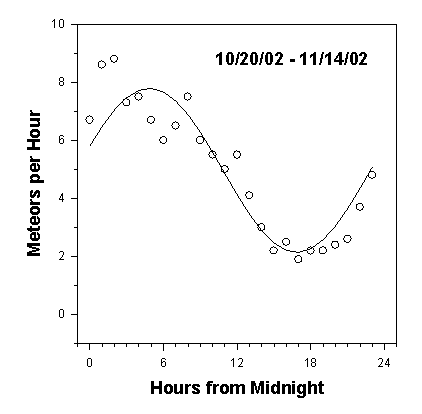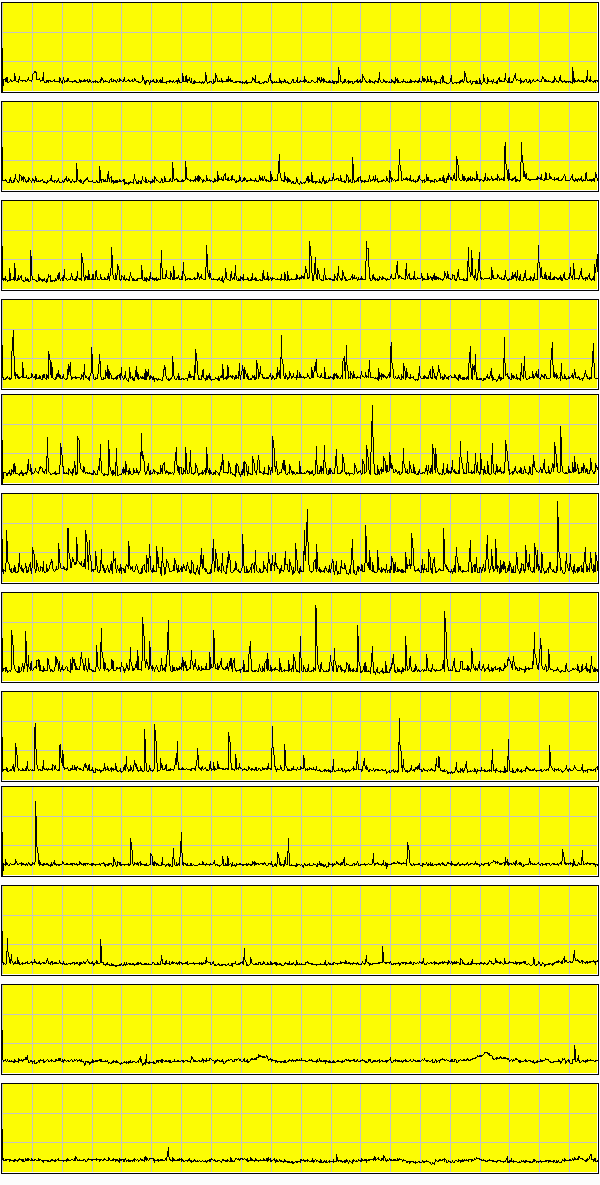A Note on Computer Clocks
The time function in computers is generally very stable, since the crystal is in a nice thermal environment. However, accuracy is another thing. We did a study (see figure below) that showed that the computer we are using gains about a minute every three days. Our reference was the Official US Time.

Most computer languages have commands to change the system clock. Correcting the time each hour by software would give one second accuracy. For extremely precise people, there are ways to set your computer clock directly from the internet.
Are These Really Meteor Signals?
So, you've assembled your observatory, but you don't know if you're seeing local air traffic or actual meteor scatter. Before we observed our first meteor shower, we weren't sure either, but there's an easy way to check. In the absence of a meteor shower, there are still a few (on average, three to five) stray, or sporadic, meteors that fall each hour. The earth in its orbit sweeps these into the atmosphere, and there are more that fall on your part of the hemisphere from midnight through noon than from noon through midnight. The figure below shows our hourly averages for the period 10/20/02 through 11/14/02 and a sine wave fit to these data. You should see something similar in periods between shower activity.

Lightning Interference
FM radio is protected from most forms of radio interference, since most natural and man-made noise sources produce amplitude modulated noise, not frequency modulated noise. Although we are using an FM radio, our circuitry looks at the amplitude modulation for meteor detection. Everyone has seen the flashes across television screens during a lightning storm. The video signal on television is amplitude modulated, so you are seeing lighning interference. Our meteor receiver responds to lighning, just like a television. By the way, the flashes on a television are black, not white as you would expect, since 100% modulation in a television corresponds to black.
The following graph shows the progression of an intense summer rain storm with lightning we experienced on June 12, 2003. Each horizontal strip is a 15 minute interval, and the data begins at 9:00 PM.

Tropospheric Ducting
A weather front can produce a condition in which cool air near the earth's surface is overlaid by warm air. Cold air is more dense than warm air, so it has a higher refractive index, and we have a situation a lot like a fiberoptic waveguide. Radio signals are guided through a duct, and radio stations quite remote from you are suddenly heard on your radio. The duct is the propogating region contained between the boundary between the cold and warm air masses and the earth's surface. Ducting is most common in the summer, especially on sunny, humid days, usually in the morning.
The following graph shows an exceptional episode of tropospheric ducting we observed on July 19, 2003. During that time, we were able to listen to WYYX, Bonifay, Florida (97.7 MHz) as if it were a local station. The graph shows the period starting at 10:30 AM and ending at 3:30 PM. Each horizontal strip is fifteen minutes in length.

Information Sources
DX-FM and DX-TV (Distance FM and TV reception) hobby pages are a good source for information on antennas and receivers. You can find a lot of information on the internet about very directional antenna arrays and modifying FM receivers for reduced adjacent channel interference.
Return to main page
Comments and technical questions can be addressed to Devlin Gualtieri, at Honeywell Laboratory, Morristown, NJ.
Copyright © 2003 D. M. Gualtieri, All Rights Reserved.
Last Update: 11-23-2003